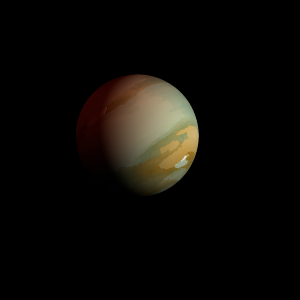|
|
Space Astro
|
Info for exoplanet "Ohigyxi"
| Scientific (actual) data |
|---|
| Planet | HD 220842 A b |
| Planet status | Confirmed |
| Mass sini | 3.18 |
| Orbital period | 218.47 |
| Semi major axis | 0.74 |
| Orbit eccentricity | 0.404 |
| Discovered | 2016 |
| Updated | 2019-12-12 |
| Omega | 225.1 |
| Tperi | 2456620 |
| K | 108.1 |
| Publication | Published in a refereed paper |
| Detection type | Radial Velocity |
| Alternate names | HD 220842 b |
| Star name | HD 220842 A |
| Right ascension | 351.65° |
| Declination | 56.89° |
| Mag v | 7.99 |
| Star distance | 62.5 |
| Star metallicity | -0.17 |
| Star mass | 1.13 |
| Star sp type | F8 |
| Star temperature | 5920 |
| Star alternate names | HD 220842 |
| Wikipedia article | HD 220842 A b |
Back
| |
| Fictional info (?) |
|---|
| Suggested name | Ohigyxi |
| Planet type | Cold planet |
| It is the second-brightest natural object in the night sky after Tudo-japij, reaching an apparent magnitude of -5 - bright enough to cast shadows at night and, sometimes, visible to the naked eye in broad daylight.
Ohigyxi and Tudo-japij are cold planets rich in iron. Ohigyxi has been known to astronomers since the beginning of the space age. It is named after the deity Ohigyxi, the god of the sea.
Ohigyxi is gravitationally locked with HD 220842 A in a 4:3 spin-orbit resonance, and rotates in a way that is unique in its solar system. An observer on Ohigyxi would therefore see only one sunrise every two years.
Having almost no atmosphere to retain heat, it has surface temperatures that vary diurnally more than on any other planet in its solar system, ranging from 75°K (-198°C) at night to 770°K (497°C) during the day across the equatorial regions. |
 |
| No known satellites |
| Google search for Ohigyxi |
|
Website by Joachim Michaelis
|
|
|
|